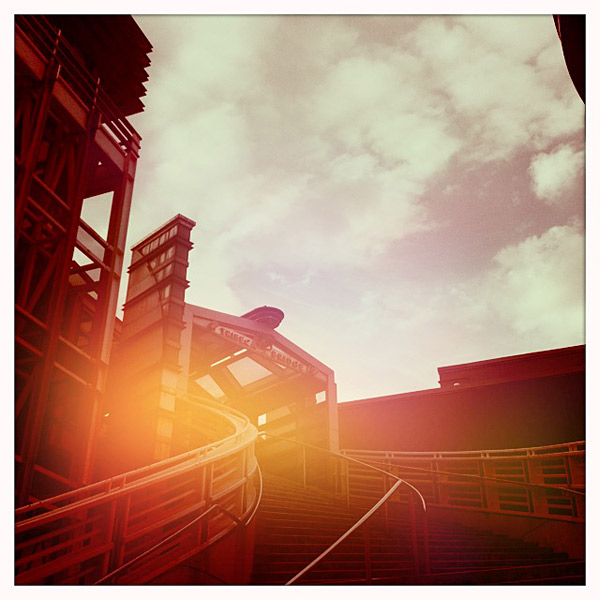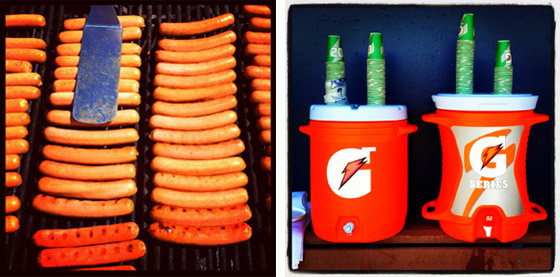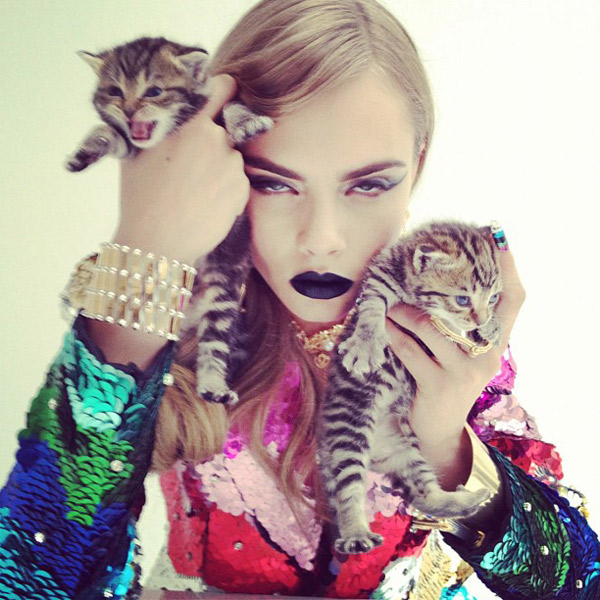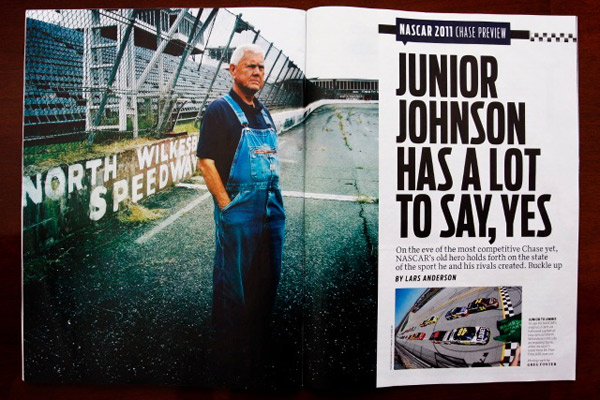Share
Why Instagram is Terrible for Photographers, and Why You Should Use It
Although everyone has an opinion on Facebook’s purchase of Instagram for $1b, I think we can all agree: Instagram is terrible for photographer...

Although everyone has an opinion on Facebook’s purchase of Instagram for $1b, I think we can all agree: Instagram is terrible for photographers.
(gotcha)
Why? Let’s count the ways.
Why Instagram is Terrible for Photographers…
The rights grab
Let’s look at the Terms of Use:
…By displaying or publishing (“posting”) any Content on or through the Instagram Services, you hereby grant to Instagram a non-exclusive, fully paid and royalty-free, worldwide, limited license to use, modify, delete from, add to, publicly perform, publicly display, reproduce and translate such Content, including without limitation distributing part or all of the Site in any media formats through any media channels, except Content not shared publicly (“private”) will not be distributed outside the Instagram Services.
…You represent and warrant that: (i) you own the Content posted by you on or through the Instagram Services or otherwise have the right to grant the license set forth in this section, (ii) the posting and use of your Content on or through the Instagram Services does not violate the privacy rights, publicity rights, copyrights, contract rights, intellectual property rights or any other rights of any person, and (iii) the posting of your Content on the Site does not result in a breach of contract between you and a third party. You agree to pay for all royalties, fees, and any other monies owing any person by reason of Content you post on or through the Instagram Services.
Like many businesses on the web that deal with photo assets (from Facebook to Pinterest), the Terms of Use are encompassing, and grab rights from photographers as a condition of participation.
Brad Mangin recently wrote about using the iPhone and Instagram. He spends most of his time shooting peak baseball action with high end Canon DSLRs and 400mm f/2.8 lenses, so he sees Instagram as a cool way to show life around the ballpark and behind the scenes moments.
The problem with this wonderful dugout photo with the Gatorade coolers is that Instagram could, in theory, license that image to Gatorade without compensating Brad. Would they? Probably not, but more and more companies are finding utility in using Instagram to create user interaction and build their content-based marketing strategies, so it does fall within the realm of possibility.
This is the main reason Darren Carroll has resisted the urge to jump on the Instagram bandwagon, and prefers sticking with apps like Hipstamatic, which have friendlier terms.
The quality sucks
Director Nick Knight recently used Instagram to photograph model Cara Delevinge posing with a bunch of animals in a series that was “inspired by Internet memes, animal GIFs and Autumn/Winter 2012’s taste for grown-up, blown-up overdressing.” There is clearly a sense of parody here, so I think this was more of a way to generate publicity than to take beautiful photos. But the point is pretty clear, the quality leaves something to be desired in low light situations.
Motion blur, poor dynamic range, pixelation, and the list goes on. The beautiful model wearing stylized clothing while holding cats is done a major injustice by taking an image with the quality you might get if you photographed an old television set.
Art filters
Tell me why the masses believe that applying an art filter to an image instantly makes it better? Oh look, it’s blue! It has a fake lens flare! Is that polaroid edge real?!!?!
It’s strange to me that we fall back on these anachronisms of the analog world. Kids don’t even know that these art filters were based on real analog phenomenon, and now they use them because they think it looks cool. Damn kids!
DC Stock Images photographer Randy Santos uses Instagram and DSLRs. There’s no comparison in my opinion.
Instagram is a repository for cute animals
While you’re trying to build a serious body of work, Instagram is being dominated by people who take photos of their pets. And these people are simultaneously amassing huge followings. In the same way that our societal love of America’s Funniest Home Videos was supplanted by the viral video on YouTube, I feel like we’re being suckered by this most basal response to want to say “awwww.” Do we lack any power of discernment and taste?
…And All the Reasons You Should Be Using It
The rights grab is a theoretical threat
Brad Mangin has used many photo apps on his iPhone, but the Instagram hook for him was the social networking aspects. Not only does he build followers through the mobile-only Instagram network, but he also publishes images onto Facebook – thus, he reaches two distinct demographics. We’ve constantly preached the need to go where your customers are, and to also understand that different demographics hang out in different places. By building an audience through multiple social networks, Brad is teeing up the ability to 1) continue providing his legacy customers like Sports Illustrated and MLB with sports action, while 2) creating a consumer-based audience that might purchase a book or photo or attend a workshop with him.
Is the Gatorade threat real? Maybe. But using Instagram in an ad campaign is a visual gimmick in the same way that the heavy handed HDR might be used. It’s less likely that a pro photographer’s image would be misapporpriated for commercial purposes than user-generated/submitted content being used as part of a viral campaign.
The quality is good enough and only getting better
- Getty Images thought it was good enough
- Foreign Policy and Newsweek thought it was good enough (Hipstamatic)
- Pictures of the Year International thought it was good enough (Hipstamatic)
- updated: Sports Illustrated thought it was good enough (Hipstamatic)
Maybe art filters do make the world look better
Have you ever watched Steven Sodebergh’s Traffic? Depending on which storyline he’s telling, you get a different film tint. Lots of people have commented on Hollywood’s obsession with this banal color correction, and how it makes every movie look the same visually. But it’s kind of like getting a polaroid camera. There’s something about that look that is so compelling, and it never gets old when you’re the one doing it.
Don’t get me wrong. It is a shame that bad photography suddenly seems better. But we can’t stop our visceral reactions from happening. Why do you think Jersey Shore is so popular?
Karen Rosenberg had an insightful piece in the New York Times about the retro look that is enabled by apps like Instagram:
Why do we want to tweak our photos so conspicuously? Why do we suddenly want them to look as if they came from old analog cameras?…Nostalgia is certainly a factor; parents, for instance, may want their children’s photographs to look like the ones in old family albums…The photograph itself, even an artily manipulated one, has become so cheap and ubiquitous that it’s no longer of much value. But the experience of sharing it is, and that’s what Facebook is in the business of encouraging us to do.
Instagram is a repository for cute animals
This is still true. Don’t do this. Ok, do it.
Don’t hate the player
Photojournalist Teru Kuwayama doesn’t hate the player, nor the game. In a piece in The Telegraph, he said:
“You could make an analogy to the advent of the electric guitar or electronic music. Much to the annoyance of classical musicians, those things made ‘everyone’ a musician. I grew up on punk rock, hip hop and death metal, so I welcome the post-classical age of photography, and the explosion of amateur expression that comes with it.
“Obviously, it sucks to be a professional photographer, and it’s personally inconvenient to lose your pedestal and your livelihood to a $2 app, but that doesn’t mean it’s a bad thing for photography.”
Photos are the glue and currency of social networks. They are fantastically “sticky” but as we’ve seen with Pinterest, the photos are great when they depict your product, not when they are your product — at least not in the traditional world of photography. But in the new world, this golden age of photography as I like to call it, photographers need to find how to leverage the distribution and “any one can do it” capabilities of the photo “app” to sustain and expand their business.
Alternately, you could invent Instagram. (By the way, you don’t need $400m to party in Vegas until 4am).







